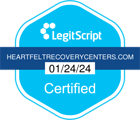Shedding Light on a Hidden Struggle
Heroin use in rural areas has become an overlooked part of the larger opioid crisis. These communities face unique challenges that make the issue harder to track, but the impact is just as devastating. In New Hampshire and across rural America, underreporting makes it difficult for families and caregivers to fully understand the scope of the problem.
Raising awareness matters. When people know what’s happening and see that treatment is possible, it opens the door to healing and recovery.
How Heroin Use in Rural Areas Slips Under the Radar
In small towns, stigma often keeps people silent. Families worry about reputation, neighbors talk, and the fear of judgment can feel overwhelming. As a result, heroin addiction rates in rural areas are likely much higher than reported.
Healthcare and law enforcement in these communities also have fewer resources, which means data collection is limited. All of this creates a cycle where the problem exists but isn’t seen clearly by the outside world.

Factors Behind Rising Heroin Use in Rural Towns
The heroin and opioid crisis in rural America is fueled by a mix of economic and social pressures. Many small communities face unemployment and limited job opportunities. When hope feels scarce, some turn to substances as a way to cope.
Isolation adds to the problem. Without accessible mental health care or strong support systems, untreated anxiety and depression often go unnoticed. Trafficking routes running through rural highways also make heroin more available, intensifying the epidemic.
The Ripple Effect on Rural Families and Communities
The economic impact of heroin in rural areas is felt everywhere: from overloaded healthcare clinics to struggling schools. In counties like Coos and Carroll, overdose rates show just how deeply heroin affects small communities.
Heroin overdose statistics in rural areas reveal that many small towns experience higher death rates than urban centers, even when reporting is incomplete. Families are torn apart, children face disrupted homes, and local schools take on the role of educating students about heroin risks. The heroin epidemic in rural towns is not just an individual struggle; it’s a community-wide challenge.

Barriers That Keep People from Getting Help
Accessing heroin recovery programs in rural locations isn’t easy. Treatment centers can be far away, transportation may be unreliable, and specialized providers are often scarce. Many families simply don’t know where to start.
But recovery is possible. Local programs for illicit drug addiction treatment in New Hampshire offer a path forward. With options like medication-assisted treatment, outpatient rehab, and dual diagnosis care, people don’t have to face recovery alone.
Building Solutions and Hope for Rural Communities
There are reasons to feel hopeful. Telehealth is expanding access to care, letting people connect with specialists from their own homes. Community education programs in schools are helping prevent future addiction, and outreach groups are giving families much-needed support.
State and nonprofit funding is also beginning to strengthen recovery networks in small towns. For those ready to take the next step, there are trusted addiction treatment programs in New Hampshire designed to meet individual needs. Families can also explore targeted care through illicit addiction services that focus on opioids like heroin.

FAQ Section
Why is heroin use in rural areas underreported?
Because of stigma, limited healthcare resources, and community reputation concerns, many families stay silent, and official reports don’t capture the full picture.
What are the heroin addiction rates in rural New Hampshire?
Reports show concerning overdose trends, especially in counties like Coos and Carroll, but true rates are likely higher due to underreporting.
What challenges do rural communities face in accessing treatment?
Distance, transportation issues, and fewer treatment providers make it harder for families to get the help they need.
How does heroin use affect rural families?
It disrupts homes, strains finances, and creates ripple effects in schools and communities.
What solutions can help prevent heroin use in small towns?
Telehealth, school education, outreach programs, and funding initiatives are all helping create pathways to prevention and recovery.
Moving Forward Together
The heroin epidemic in rural towns may not always be visible, but the effects are real and far-reaching. Families don’t have to face these challenges in silence. With the right support, recovery is possible, and hope can be restored.
If you or someone you love is ready to start the path toward healing, our New Hampshire team is here to help. Call today to verify insurance and learn more about your treatment options.
Related Resources for Deeper Understanding
- Explore the broader drug landscape with this guide on understanding drugs by addiction.
- Learn how co-occurring conditions are treated with dual diagnosis programs for addiction and mental health.
- For insight into the dangers of opioids, see what fentanyl looks like and how it contributes to the opioid crisis.







